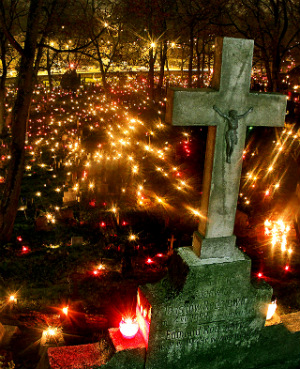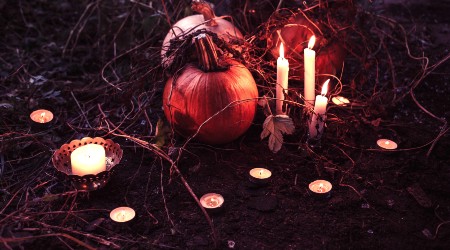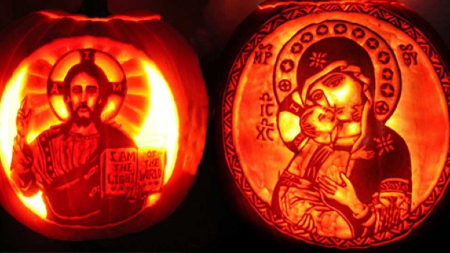We ask you, humbly: don't scroll away.
Hi readers, it seems you use Catholic Online a lot; that's great! It's a little awkward to ask, but we need your help. If you have already donated, we sincerely thank you. We're not salespeople, but we depend on donations averaging $14.76 and fewer than 1% of readers give. If you donate just $5.00, the price of your coffee, Catholic Online School could keep thriving. Thank you.Help Now >
Ecclesiastical Feasts
FREE Catholic Classes
( Latin Festum ; Greek heorte ).
Feast Days, or Holy Days, are days which are celebrated in commemoration of the sacred mysteries and events recorded in the history of our redemption, in memory of the Virgin Mother of Christ, or of His apostles, martyrs, and saints, by special services and rest from work. A feast not only commemorates an event or person, but also serves to excite the spiritual life by reminding us of the event it commemorates. At certain hours Jesus Christ invites us to His vineyard ( Matthew 20:1-15 ); He is born in our hearts at Christmas ; on Good Friday we nail ourselves to the cross with Him; at Easter we rise from the tomb of sin ; and at Pentecost we receive the gifts of the Holy Ghost. Every religion has its feasts, but none has such a rich and judiciously constructed system of festive seasons as the Catholic Church. The succession of these seasons form the ecclesiastical year, in which the feasts of Our Lord form the ground and framework, the feasts of the Blessed Virgin and the Saints the ornamental tracery.
Prototypes and starting-points for the oldest ecclesiastical feasts are the Jewish solemnities of Easter and Pentecost. Together with the weekly Lord's Day, they remained the only universal Christian feasts down to the third century ( Tertullian, "De Bapt." 19: Origen, "Contra Celsum", VIII, 22). Two feasts of Our Lord (Epiphany, Christmas ) were added in the fourth century; then came the feasts of the Apostles and martyrs, in particular provinces; later on also those of some confessors (St. Martin, St. Gregory ); in the sixth and seventh centuries feasts of the Blessed Virgin were added. After the triumph of Christianity, in the fourth and fifth centuries, the sessions of the civil courts were prohibited on all feasts, also the games in the circus and theatrical performances, in order to give an opportunity to all to hear Mass. In the course of centuries the ecclesiastical calendar expanded considerably, because in earlier ages every bishop had a right to establish new feasts. Later on a reduction of feasts took place, partly by regular ecclesiastical legislation, partly in consequence of revolutions in State and church. The Statutes of Bishop Sonnatius of Reims (see CALENDAR, III, 163), in 620, mention eleven feasts; the Statutes of St. Boniface ("Statuta", Mansi XII, 383), nineteen days, "in quibus sabbatizandum" , i.e. days of rest. In England (ninth century) the feasts were confined to Christmas, Epiphany, three days of Easter, Assumption, Sts. Peter and Paul, St. Gregory, and All Saints. Before the reign of King Edgar (959-75), three festivals of the B.V. Mary, and the days kept in honour of the Apostles were added; in the tenth year of Ethelred (989), the feast of St. Edward the Martyr (18 March), and in the reign of Canute, or Cnut (1017-35), that of St. Dunstan (19 May), were added. The feasts in the Statutes of Lanfrane (d. 1089) are quite numerous, and are divided into three classes ( Migne, P.L., CL, 472-78)
The Decree of Gratian (about 1150) mentions forty-one feasts besides the diocesan patronal celebrations; the Decretals of Gregory IX (about 1233) mention forty-five public feasts and Holy Days, which means eighty-five days when no work could be done and ninety-five days when no court sessions could be held. In many provinces eight days after Easter, in some also the week after Pentecost (or at least four days), had the sabbath rest. From the thirteenth to the eighteenth century there were dioceses in which the Holy Days and Sundays amounted to over one hundred, not counting the feasts of particular monasteries and churches. In the Byzantine empire there were sixty-six entire Holy Days (Constitution of Manuel Comnenus, in 1166), exclusive of Sundays, and twenty-seven half Holy Days. In the fifteenth century, Gerson, Nicolas de Clémanges and others protested against the multiplication of feasts, as an oppression of the poor, and proximate occasions of excesses. The long needed reduction of feast days was made by Urban VIII (Universa per orbem, 13 Sept., 1642). There remained thirty-six feasts or eighty-five days free from labour. Pope Urban limited the right of the bishops to establish new Holy Days; this right is now not abrograted, but antiquated. A reduction for Spain by Benedict XIII (1727) retained only seventeen feasts; and on the nineteen abrogated Holy Days only the hearing of Mass was obligatory. This reduction was extended (1748) to Sicily. For Austria (1745) the number had been reduced to fifteen full Holy Days; but since the hearing of Mass on the abrogated feasts, or half Holy Days, the fast on the vigils of the Apostles were poorly observed, Clement XIV ordered that sixteen full feasts should be observed; he did away with the half Holy Days, which however continued to be observed in the rural districts (peasant Holy Days, Bauernfeiertage ). The parish priests have to say Mass for the people on all the abrogated feasts. The same reduction was introduced into Bavaria in 1775, and into Spain in 1791; finally Pius VI extended this provision to other countries and provinces.
By the French revolution the ecclesiastical calendar had been radically abolished, and at the reorganization of the French Church, in 1806, only four feasts were retained: Christmas, the Ascension, the Assumption, and All Saints; the other feasts were transferred to Sunday. This reduction was valid also in Belgium and in Germany on the left bank of the Rhine. For the Catholics in England Pius VI (19 March, 1777) established the following lists of feasts: Easter and Pentecost two days each, Christmas, New Year's Day, Epiphany, Ascension, Corpus Christi, Annunciation, Assumption, Sts. Peter and Paul, St. George, and All Saints. After the restoration of the hierarchy (1850), the Annunciation, St. George, and the Monday after Easter and Pentecost were abolished. Scotland keeps also the feast of St. Andrew, Ireland the feasts of St. Patrick and the Annunciation. In the United States, the number of feasts was not everywhere the same; the Council of Baltimore wanted only four feasts, but the decree was not approved by Rome ; the third Plenary Council of Baltimore (1884), by a general law, retained six feasts: Christmas, New Year's Day, Ascension, Assumption, the Immaculate Conception, and All Saints. Sts. Peter and Paul and Corpus Christi were transferred to the next following Sunday. In the city of Rome the following feasts are of double precept (i.e. hearing Mass, and rest from work): Christmas, New Year's Day, Epiphany, Purification, St. Joseph, Annunciation, Ascension, St. Philip Neri (26 May), Corpus Christi , Nativity of the B.V.M., All Saints, Conception of the B.V.M., St. John the Evangelist. The civil law in Italy acknowledges: Epiphany, Ascension, Sts. Peter and Paul, Assumption, Nativity, Conception, Christmas, and the patronal feasts.
The Greek Church at present observes the following Holy Days: Nativity of Mary, Exaltation of the Cross (14 Sept.), St. Demetrius (26 Oct.), St. Michael (8 Nov.), Entrance of Mary into the Temple (21 Nov.), St. Nicholas (6 Dec.), Conception of St. Anne (9 Dec.), Nativity of Christ, Commemoration of Mary (26 Dec.), St. Stephen (27 Dec.), Circumcision (1 Jan.), Epiphany, the Doctors St. Basil, St. Gregory, St. John Chrysostom (30 Jan.), the Meeting of Christ and Simeon (2 Febr.), Annunciation, St. George (23 Apr.), Nativity of St. John, Sts. Peter and Paul, St. Elias (20 July), Transfiguration (6 Aug.), Assumption, Beheading of St. John (29 Aug.), the Monday after Easter and Pentecost, Ascension of Christ, and the patronal feasts. The Russians have only nine ecclesiastical Holy Days which do not fall on a Sunday, viz.: Nativity, Epiphany, Ascension, Transfiguration, Purification, Annunciation, Assumption, Presentation of Mary (21 Nov.), and the Exaltation of the Cross. But they have fifty festivals (birthdays, etc.) of the imperial family, on which days not even a funeral can be held.
DIVISION OF FEASTS
Feasts are divided:
- According to external celebration ( feriatio ): festa fori , or feasts of precept, with double obligation, to rest from work and to hear Mass; festa chori , which are kept only in the liturgy, by the celebration of Mass, and the recitation of the Divine Office. Besides these there were, and still are, in some dioceses (e.g. in Holland ), the Half Holy Days, on which the people after having heard Mass can do servile work ( Candlemas, Nativity of Mary, and the Immaculate Conception in the Diocese of Utrecht).
- According to extension : Universal feasts, celebrated everywhere, at least in the Latin Church ; particular feasts, celebrated only by certain religious orders, countries, provinces, dioceses or towns. These latter are either prescribed by the general rubrics, like the patronal feasts, or are specially approved by the Apostolic See , and prescribed by bishops or synods, for particular countries or dioceses ( festa pro aliquibus locis in the Breviary ). The universal feasts are contained in the Roman Calendar.
- According to their position in the calendar: movable feasts , which always fall on a certain day of the week, depending on the date of Easter, or the position of the Sunday, e.g. Ascension of Christ (forty days after Easter ), or the feast of the Holy Rosary, the first Sunday of October; immovable feasts, which are fixed to a certain date of the month, e.g. Christmas, 25 December. In the Armenian Church all the feasts of the year are movable, except six: Epiphany, Purification (14 Febr.), Annunciation (7 April), Nativity (8 Sept.), Presentation (21 Nov.), and (8 Dec. Conception of Mary (Tondini, "Calendrier liturgique de la Nation Arménienne", Rome, 1906).
- According to the solemnity of the office or rite (see CALENDAR and DUPLEX). Since the thirteenth century there are three kinds of feasts: festum simplex , semiduplex , and duplex , all three regulated by the recitation of the Divine Office or Breviary. The simple feast commences with the chapter ( capitulum ) of First Vespers, and ends with None. It has three lessons and takes the psalms of Matins from the ferial office; the rest of the office is like the semidouble. The semidouble feast has two Vespers, nine lessons in Matins, and ends with Compline. The antiphons before the psalms are only intoned. In the Mass, the semidouble has always at least three "orationes" or prayers. On a double feast the antiphons are sung in their entirety, before and after the psalms. In Lauds and Vespers there are no suffragia of the saints, and the Mass has only one "oratio" (if there be no commemoration prescribed). The ordinary double feasts are called duplicia minora ; occurring with feasts of a higher rank, they can be simplified, except the octave days of some feasts and the feasts of the Doctors of the Church, which are transferred. The feasts of a higher rank are the duplicia majora (introduced by Clement VIII ), the duplicia secundae classis and the duplicia primae classis . Some of the latter two classes are kept with octaves. Before the reformation of the Breviary by Pius V (1566-72), the terms by which the solemnity of a feast could be known were, in many churches, very different from the terms we use now. We give a few examples from Grotefend, "Zeitrechnung", etc. (Hanover, 1891-98, II-III): Chur : "Festum summum, plenum officium trium lectionum, commemoratio." Havelberg: "Festum summum, semisummum, secundum, tertium, novem majus, novem minus, compulsation 3 lect., antiphona." Halle: "Festum praepositi, apostolicum, dominicale, 9 lect., compulsation 3 lect., antiphona." Breslau : "Festum Triplex, duplex, 9 lectionum, 3 lect., commemoratio." Carthusians : "Festum Candelarum, capituli, 12 lect., missa, commemoratio." Lund : "Fest Praelatorum, canonicorum, vicariorum, duplex, simplex, 9 lect., 3 lect., memoria."
Some of the religious orders which have their own breviary, did not adopt the terms now used in the Roman Breviary. For example, the Cistercians have the following terminology: "Festum sermonis majus, sermonis minus, duarum missarum majus, 2 miss. minus, 12 lectionum, 3 lect., commemoratio." The Dominicans : "Totum duplex, duplex, simplex, 3 lect., memoria." The Carmelites : "Duplex majus I. classis solemnis, dupl, maj. I. cl. duplex majus 2. classis, duplex minus I, classis, duplex minus 2, classis, semiduplex, simplex, simplicissimum."
Among the feasts of the same rite there is a difference in dignity. There are
- primary feasts which commemorate the principal mysteries of our religion, or celebrate the death of a saint;
- secondary feasts, the object of which is a particular feature of a mystery, e.g. the feast of the Crown of Thorns , of the relics of a saint or of some miracle worked by him, e.g. the feast of the translation of St. Stephen, the Apparition of Our Lady of Guadalupe. The list of primary and secondary feasts has been determined by a decree of the Sacred Congregation of Rites (22 Aug., 1893), and is found in the introduction to the Roman Breviary .
- Within the two classes mentioned the feasts of Christ take the first place, especially those with privileged vigils and octaves ( Christmas, Epiphany, Easter, Pentecost, and Corpus Christi ); then follow the feasts of the Blessed Virgin, the Holy Angels , St. John the Baptist, St. Joseph, the Apostles and Evangelists, and the other saints.
Join the Movement
When you sign up below, you don't just join an email list - you're joining an entire movement for Free world class Catholic education.
-

-
Mysteries of the Rosary
-
St. Faustina Kowalska
-
Litany of the Blessed Virgin Mary
-
Saint of the Day for Wednesday, Oct 4th, 2023
-
Popular Saints
-
St. Francis of Assisi
-
Bible
-
Female / Women Saints
-
7 Morning Prayers you need to get your day started with God
-
Litany of the Blessed Virgin Mary
All Saints' Day, Halloween and All Souls' Day: What's the difference?
-

Should Christians Celebrate Halloween?
-

Since when did Halloween become a Christian holiday?
-
ADORABLE: A Little Boy's Heartfelt Lunchtime Prayer
-
Scientists Decode 3,000-Year-Old Babylonian Tablet, Revealing Potential Location of Noah's Ark
Daily Catholic
 Daily Readings for Friday, November 01, 2024
Daily Readings for Friday, November 01, 2024 St. Valentine Berrio-Ochoa: Saint of the Day for Friday, November 01, 2024
St. Valentine Berrio-Ochoa: Saint of the Day for Friday, November 01, 2024 Litany of the Saints: Prayer of the Day for Friday, November 01, 2024
Litany of the Saints: Prayer of the Day for Friday, November 01, 2024- Daily Readings for Thursday, October 31, 2024
- St. Wolfgang: Saint of the Day for Thursday, October 31, 2024
- Memorare: Prayer of the Day for Thursday, October 31, 2024
![]()
Copyright 2024 Catholic Online. All materials contained on this site, whether written, audible or visual are the exclusive property of Catholic Online and are protected under U.S. and International copyright laws, © Copyright 2024 Catholic Online. Any unauthorized use, without prior written consent of Catholic Online is strictly forbidden and prohibited.
Catholic Online is a Project of Your Catholic Voice Foundation, a Not-for-Profit Corporation. Your Catholic Voice Foundation has been granted a recognition of tax exemption under Section 501(c)(3) of the Internal Revenue Code. Federal Tax Identification Number: 81-0596847. Your gift is tax-deductible as allowed by law.








 Daily Readings for Friday, November 01, 2024
Daily Readings for Friday, November 01, 2024 St. Valentine Berrio-Ochoa: Saint of the Day for Friday, November 01, 2024
St. Valentine Berrio-Ochoa: Saint of the Day for Friday, November 01, 2024 Litany of the Saints: Prayer of the Day for Friday, November 01, 2024
Litany of the Saints: Prayer of the Day for Friday, November 01, 2024


